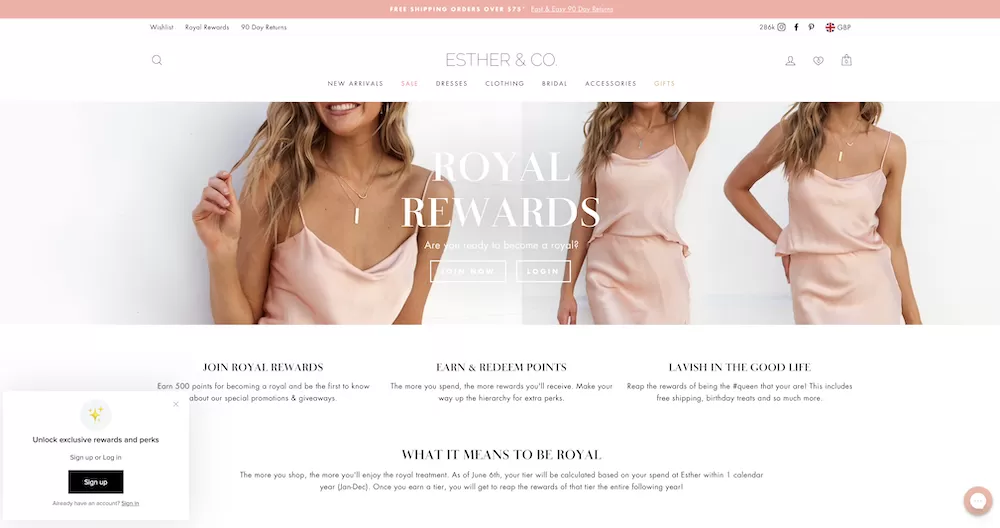Email marketing has been an integral part of successful marketing strategies for over 20 years, and it continues to gain in popularity and effectiveness. 87% of email marketers leverage email to nurture their prospects and customers, and email marketing has been shown to generate a 3,800% return on investment. For perspective that’s £38 back from every £1 spent. But stick around, these are old figures, it gets much better than that.
So what are the differences between transactional and event-triggered email? And how do both of these approaches improve the customer experience, help you deliver on customer expectations, and establish a trust to cement and accelerate customer relationships, and turn it into profit?
What is a transactional email?
The primary purpose of transactional emails is to bring awareness of critical brand and product occurrences to customers for a more positive, informed and these days, thanks to email hyper-personalisation software, they can be offered a uniquely personal experience. By their very nature, transactional emails are non-promotional.
They do, however, relay critical information to customers that allows them to gain more insight into and control of their customer journey. Transactional emails are rules-based, regulated, and monitored — and are not restricted by opt-out preferences or blocked by anti-spam filters.
Common examples of transactional emails include:
- Purchase acknowledgement/receipt
- Password update
- Account change or update
- Service delays
- Suspicious or fraudulent activity reports
- Presenting products identified as most likely to be purchased next – highest probability.
All transactional emails are triggered by some sort of event, purchase history, navigation and impressions captured, time on the product, recurrence of views, length of views etc but not all event-triggered emails are transactional.
What is an event-triggered email?
Similar to transactional emails, event-triggered emails (ETEs) are sent based on an action. The difference is that event-triggered emails are automatically sent based on some sort of user behaviour, visit, or action — that is, an event triggered by an individual. Since these communications are based on user intent, they are inherently promotional. Our partners Klaviyo are excellent exponents of the art of triggered emails.
Done correctly, event-triggered emails are part of an automated workflow, which means they are personal to the individual consumer and relevant based on the user’s interaction with a brand. And since they are both anticipated and relevant, these emails usually have much higher engagement rates than standard marketing emails.
Common examples of event-triggered emails include:
- Welcome and onboarding emails
- Re-engagement and cart abandonment emails
- Download or subscription confirmation emails
- Registration confirmation emails
- Celebratory emails (promotions for birthdays, anniversaries, and other milestones)
It works well, as you might expect. But it has to be put into perspective. Hyper-personalisation software out performs not only standard promotional emails but triggered emails, added to omnichannel marketing combined by a rate of 20x (twentyfold). If that doesn’t sharpen your focus nothing will. So our headline shows no comparison in terms of ROI, as one obliterates the other.
How transactional and event-triggered email streamline and improve the customer experience
Transactional and event-triggered emails produce several key benefits for consumers and marketers alike.
The benefits of transactional emails
- Improved Customer Loyalty: Your customers have come to expect certain communications from the brands they do business with. By delivering timely, relevant, and critical messages, you can prove your value to your customers and deliver on their expectations — increasing brand affinity and advocacy. Most importantly, with PPS, you offer them exactly what they want, when they want it.
PPS is completely autonomous, as it deals with vast amounts of data, it avoids the necessity for human involvement. How much do your staff cost? Plus no downtime, no holidays, no mistakes, and always products with the greatest propensity for the receiving individual to buy it. - Increased Convenience: Misplacing a password is a pain. Carrying around a physical receipt is a pain. Dealing with unexpected changes to an account is painful. Transactional emails are delivered on time and help add convenience and clarity to your customers’ lives. Trivial but necessary points to include.
- Create Communication Pathways: Great customer marketing is based on consistent brand and messaging experiences. Transactional emails empower you to streamline these experiences for better communications and long-lasting customer connections — a key element of effective growth marketing.
No one is going to steal business away from you if you always show customers what they want to buy. The power of it appearing as if you know them personally is a highly potent aphrodisiac, resulting in complete loyalty and naturally a massive increase in customer lifetime value.
The benefits of event-triggered emails
- Improved Engagement: Since automated trigger emails are sent based on user behaviour and activities, you can eliminate the guesswork and send content, messaging, and offers based on your prospects and customer’s actual needs. Relevancy improves engagement; engagement improves opportunities; and opportunities improve return on investment.
- Increased Personalisation: Using marketing automation to create and execute event-triggered emails allows you to personalize the experience by inserting conditional logic based on user engagement, meaning you can provide alternate journeys to best suit consumer needs. In addition, you can add dynamic content that will adapt to each unique recipient.
- Scaleable Automation: The great and realised promise of marketing automation is that it allows businesses of all shapes and sizes to scale their marketing and sales efforts easily and effectively. By creating reusable event-triggered workflows, marketers can drastically increase their efficiency — allowing them to focus on more creative efforts.
Explore re-engineered transactional and event-triggered email features
We recently launched significant enhancements to our hyper-personalisation emailing functionality, with a machine learning upgrade to improve selections based on intuitive elements unrelated to the naked eye, made by the individual consumer.
If every time they make a purchase there is something specific that concludes in the sale, not otherwise apparent, it is being captured and included for their next visit, or whenever what is now captured can be used to secure that event.
To learn more about all the ways you can use AI machine learning hyper-personalisation email software to deliver amazing outbound marketing campaigns and communications, please book a slot with us.





